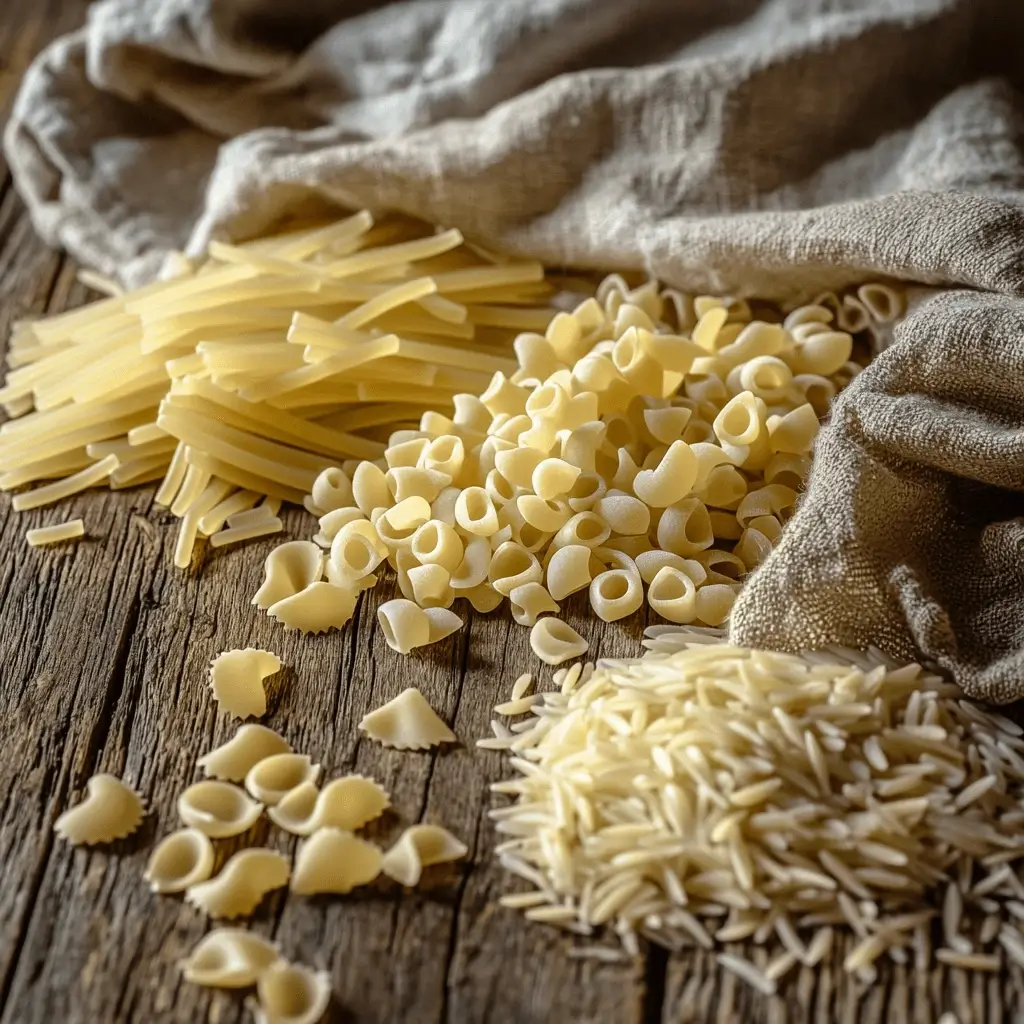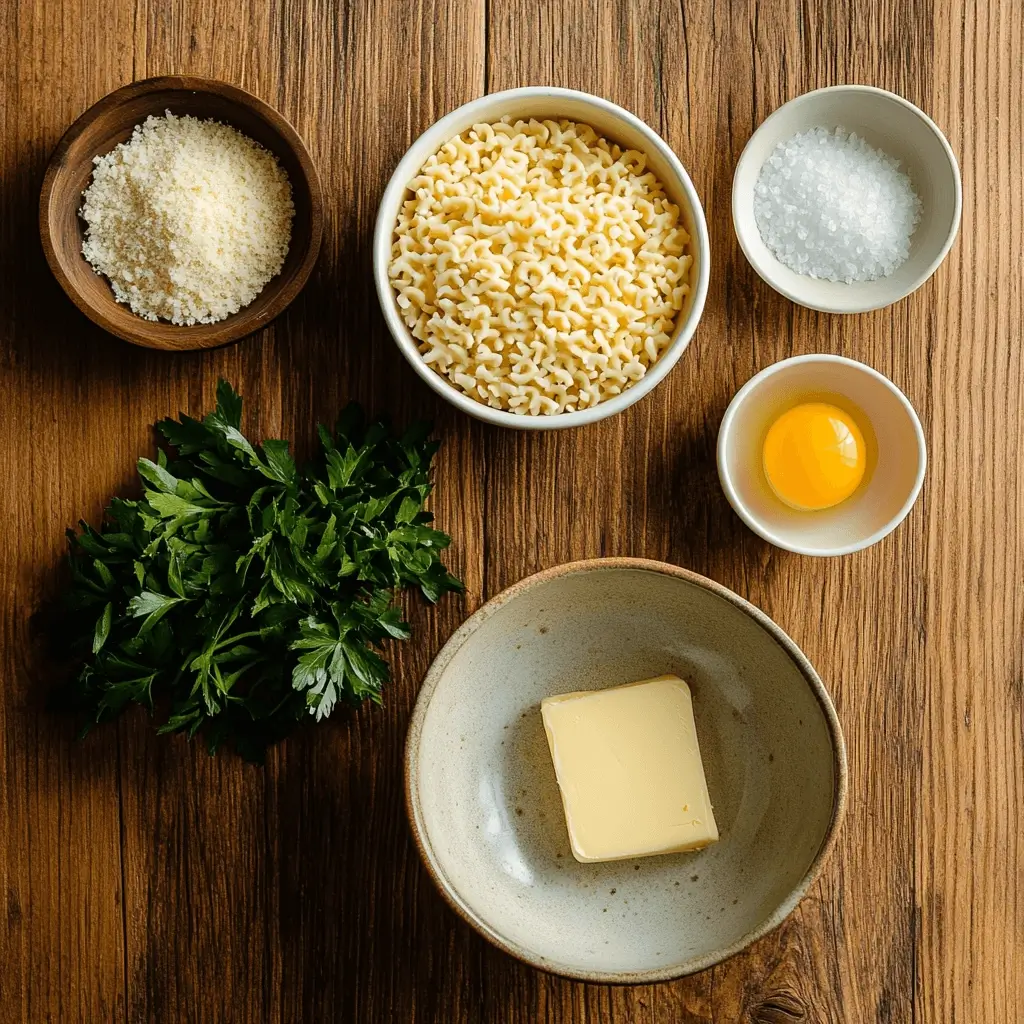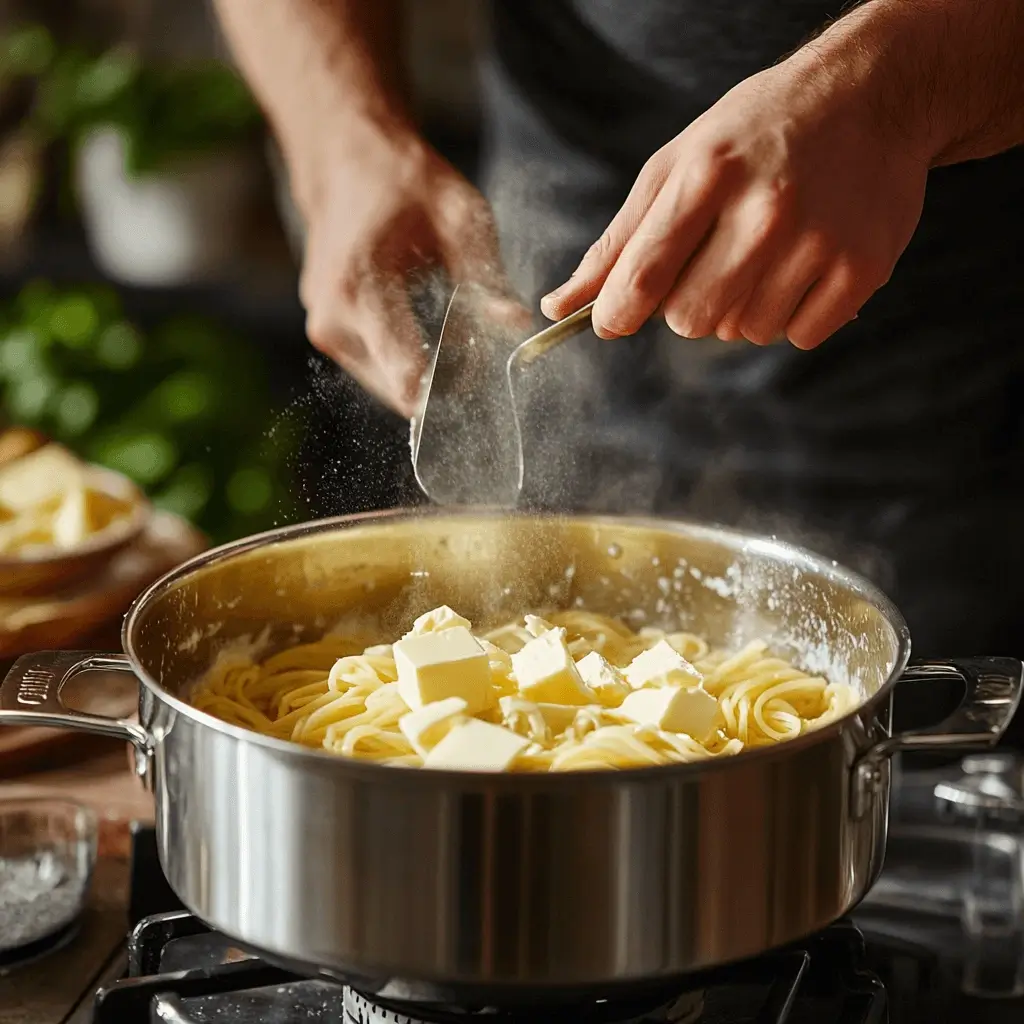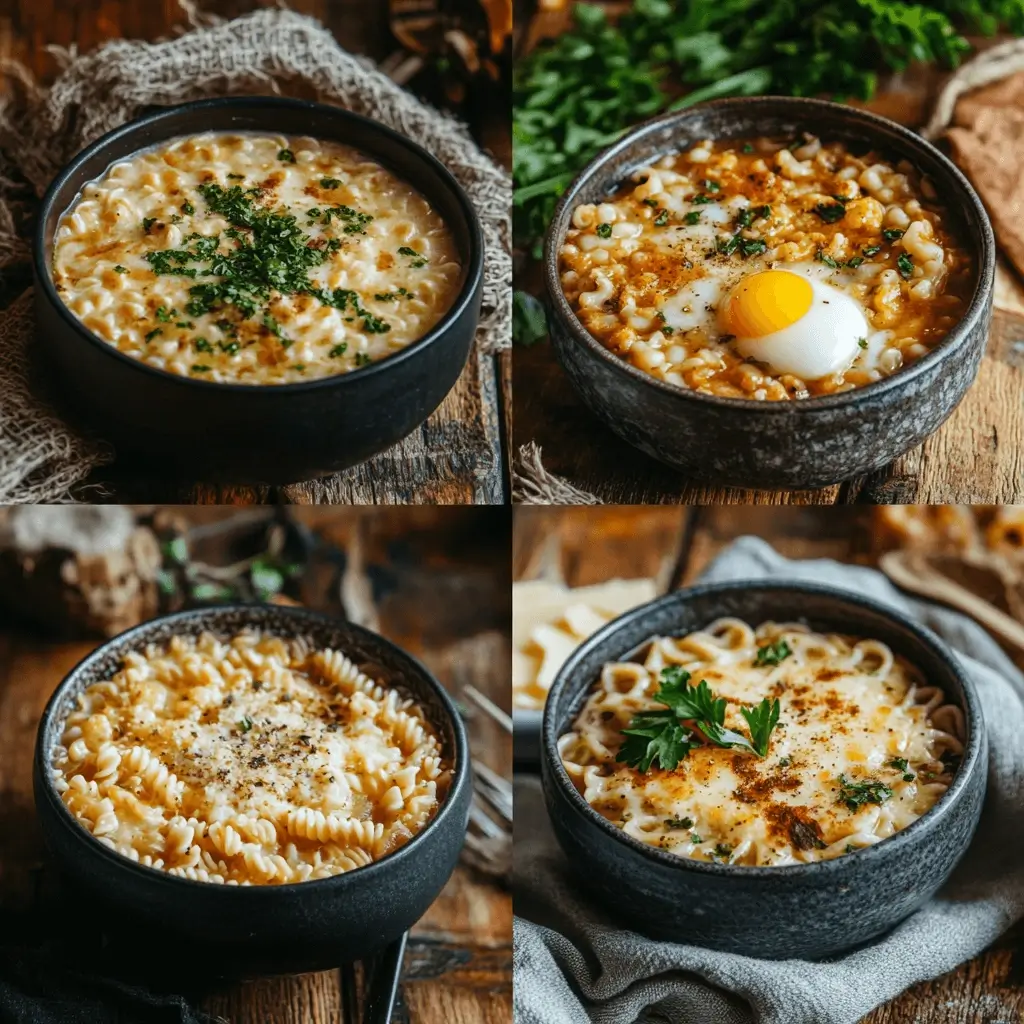Introduction
There’s something undeniably comforting about a warm bowl of pastina. Tiny, star-shaped pasta simmered in broth or water, then enriched with butter, cheese, or even a whisked egg it’s the kind of meal that wraps you in a hug. For those looking to recreate this classic dish, a simple pastina recipe can capture that warmth and nostalgia. A staple in Italian households for generations, pastina is often the first solid food Italian children eat and the go-to dish when anyone in the family needs a little extra care.
Whether you’re feeling under the weather, short on time, or simply craving something nostalgic, this perfect pastina recipe delivers cozy satisfaction in just minutes. In this step-by-step guide, you’ll learn how to make it the traditional way, explore delicious variations, and pick up some insider tips to elevate even the simplest bowl.
What Is Pastina?

What Makes Pastina Unique?
Pastina, which literally means “little pasta” in Italian, is one of the smallest types of pasta you’ll find. Often shaped like tiny stars (stelline), dots (acini di pepe), or rice grains (risoni), it’s specifically designed to cook quickly and deliver comfort with every spoonful. Unlike larger pasta shapes, pastina melts into broths and buttery sauces, creating a silky texture that feels almost therapeutic.
The History and Cultural Significance in Italy
In many Italian families, pastina is more than just food it’s a tradition. It’s often the very first dish served to toddlers, made simply with water, butter, and cheese. But it’s also the dish Italian nonnas lovingly prepare when someone’s sick or needs a little nurturing. This tiny pasta carries generations of affection, and every household seems to have its own way of preparing it.
Common Uses of Pastina in Cooking
While most associated with soups and simple buttery dishes, pastina is incredibly versatile. You can cook it in chicken broth for a light, healing meal, stir in Parmesan and butter for a rich, cheesy bowl, or crack in an egg for added protein and creaminess. It’s the ultimate blank canvas for comfort food quick to make, endlessly adaptable, and always satisfying.
Ingredients for the Perfect Pastina Recipe

Essential Ingredients
At its core, a traditional pastina recipe requires only a handful of pantry staples — simplicity is the soul of this dish. Here’s what you’ll need for the classic version:
- Pastina pasta (such as stelline, acini di pepe, or orzo if needed)
- Water or broth (chicken or vegetable for added flavor)
- Salt, to enhance the natural taste
- Butter (or olive oil, if preferred)
- Grated Parmesan cheese, for richness and depth
These ingredients come together quickly and transform into a creamy, soul-soothing bowl that’s as comforting as it is nostalgic.
Flavor-Boosting Additions
While the classic version is beloved, there’s plenty of room to personalize your pastina:
- Egg: Whisked in during the final minute of cooking for extra creaminess and protein.
- Garlic or shallots: Lightly sautéed in the pot before adding water or broth for aromatic depth.
- Fresh herbs: A sprinkle of parsley, basil, or thyme can brighten the dish.
- Milk or cream: To make the texture even more luscious and velvety.
These add-ins can elevate a simple bowl of pastina recipe into something even more satisfying and flavorful.
Dietary Modifications
Pastina is incredibly adaptable to different dietary needs:
- Vegan or dairy-free: Use olive oil instead of butter, skip the cheese or use plant-based alternatives.
- Gluten-free: Look for gluten-free pastina-style pasta made from rice or corn.
- Low-sodium: Opt for homemade or low-sodium broth, and go easy on the cheese.
Whether you’re cooking for little ones, dietary restrictions, or just a craving, pastina fits the bill.
Step-by-Step Instructions for Cooking Pastina
Making the perfect pastina isn’t about complicated techniques it’s about attention to texture, timing, and the love you put into each stir. While the dish is often ready in under 15 minutes, the results can feel like something that’s been simmering in a nonna’s kitchen all day. Let’s walk through the process step-by-step so your bowl turns out just right every time.
1. Boiling the Pastina in Broth or Water
Start by choosing your liquid base. If you want something richer and more flavorful, go for a good-quality chicken broth or vegetable broth. Water works too, especially if you’re keeping things simple — just remember to season it well with salt, as the pastina itself doesn’t carry much flavor.
Use a ratio of 1 cup of pastina to 2–2.5 cups of liquid. Pour the liquid into a small saucepan and bring it to a gentle boil. Once bubbling, stir in the pastina slowly don’t just dump it all at once. Stirring early and often prevents clumping and ensures even cooking.
Let it simmer over medium heat, uncovered, stirring occasionally. Pastina cooks very quickly, usually in 5 to 7 minutes, depending on the shape and brand. You’ll know it’s ready when it looks soft but still holds its tiny form it should never be mushy.
Pro Tip: Don’t drain the pastina completely. Leaving a little bit of the starchy cooking liquid helps create a creamier texture, especially if you’re adding cheese or butter afterward.
2. Adding Butter and Cheese for Creaminess
Once the pastina is tender, remove the pot from the heat. Now comes the comfort: stir in a generous knob of unsalted butter (about 1–2 teaspoons per serving) and a few tablespoons of grated Parmesan or Pecorino Romano. The residual heat will melt everything into a creamy, dreamy sauce without needing to add cream.
Taste and adjust the seasoning. A pinch of salt, maybe a touch of black pepper, and you’re nearly there. If you want a looser texture, stir in a splash of hot broth or milk until you get your preferred consistency.

This basic buttery-cheesy blend is the classic Italian-style pastina that so many people remember from childhood rich, soothing, and utterly satisfying.
3. Optional Additions: Egg, Herbs, or Milk
Feeling adventurous or want to boost the nutrition? This is where pastina becomes your playground.
- Egg: Crack an egg into a small bowl and beat it lightly. Slowly pour it into the hot pastina while stirring quickly to create fine ribbons of cooked egg a technique similar to Italian stracciatella or Chinese egg drop soup. It adds protein and richness without overpowering the dish.
- Fresh herbs: Finely chopped parsley, thyme, or chives can add brightness and freshness. Stir them in right before serving to preserve their flavor.
- Milk or cream: For extra creaminess, especially for little ones, add a splash of warm milk or a spoon of heavy cream. This creates a more indulgent, porridge-like version of pastina that feels incredibly nourishing.
Each of these additions brings a new dimension to your dish — and once you start customizing it, you’ll see why pastina is so beloved across generations.
By the time you’re done, what started as a few humble ingredients becomes a bowl full of warmth, nostalgia, and satisfaction. And that’s the real magic of pastina simple, honest, and made to comfort.
Popular Variations of Pastina Recipes
One of the most beautiful things about pastina is its incredible versatility. It’s like the white t-shirt of the Italian kitchen: simple, timeless, and easy to dress up however you like. Once you’ve mastered the classic buttery version, the real fun begins — you can tweak, enrich, and reinvent it endlessly to suit your mood, dietary needs, or what’s in your fridge. Here are some of the most popular and beloved ways to enjoy pastina.

Classic Cheesy Pastina (For Kids & Adults Alike)
This is the go-to variation in many Italian households — especially when cooking for children or anyone in need of something soft, cozy, and mild. Once your pastina is cooked (ideally in salted water or light broth), you stir in:
- A knob of unsalted butter
- A generous handful of grated Parmesan or Pecorino Romano
- A splash of the cooking water to make it creamy
It’s simple, soothing, and always hits the spot. You can even add a bit of grated mozzarella or a spoonful of ricotta for a creamier texture. Many Italian moms serve this to toddlers as their first “real” meal — and even grown-ups find themselves coming back to it when they need comfort in a bowl.
Pastina in Broth (Healing Sick-Day Favorite)
When you’re feeling under the weather, nothing quite matches the restorative powers of pastina cooked in hot broth. This variation skips the cheese and butter and focuses on warmth and lightness.
Here’s how to make it:
- Simmer pastina directly in chicken or vegetable broth
- Add a pinch of salt and maybe a dash of olive oil
- Optional: toss in a few chopped carrots, celery, or onions for a light vegetable soup feel
The result is a soothing, easy-to-digest dish that warms your body and soul. Think of it as Italy’s version of chicken noodle soup — but simpler, faster, and just as healing.
Egg-Infused Pastina (Italian Stracciatella Style)
This variation is perfect when you need a little more substance — a dish that feels almost like a meal, not just a side. The secret ingredient? A fresh egg.
Here’s how it works:
- Once the pastina is cooked, lower the heat
- Beat one egg in a bowl, then slowly drizzle it into the pot while stirring continuously
- Watch as it forms delicate, silky strands — similar to stracciatella soup
You can add a sprinkle of Parmesan, some cracked black pepper, and maybe a pinch of nutmeg for a subtle depth. The egg boosts the protein, making this variation hearty and satisfying without being heavy. A real cold-day champion.
Vegan or Dairy-Free Pastina
Yes, pastina can absolutely be enjoyed without butter, cheese, or egg — and it still tastes amazing. This variation keeps things plant-based while retaining all the comfort.
Try this version:
- Cook pastina in vegetable broth with a dash of olive oil
- Add nutritional yeast for a cheesy flavor
- Stir in some dairy-free margarine or a spoonful of cashew cream
- Finish with fresh herbs, garlic powder, or even a splash of unsweetened almond milk for richness
This is a great option if you’re cooking for vegans, people with dairy allergies, or just looking to lighten things up. It’s proof that simple food can still be indulgent without the guilt.
From creamy and indulgent to light and healing, these variations prove that pastina isn’t just a recipe — it’s a canvas. Play with flavors, follow your cravings, and you’ll discover why this humble pasta has held a place at the Italian table for generations.
Tips, Tricks & Storage Advice
While pastina may seem like the simplest dish on earth, a few small tweaks can take it from “good” to “nonna-level legendary.” From perfect texture to smart leftovers, here’s how to master the little details that make a big difference.
Pastina Cooking Tips from Italian Nonnas
Nonna knows best — and her wisdom is gold when it comes to getting pastina just right.
- Use broth whenever possible. Cooking pastina in broth instead of plain water adds instant depth and makes the dish feel more nourishing.
- Don’t overcook. Pastina goes from perfect to mush in seconds. Keep an eye on it and taste-test often — you’re aiming for soft, not soggy.
- Stir constantly. This prevents clumping and ensures even cooking. Pastina is small and sticky; a few seconds of neglect can turn it into a gluey mass.
- Don’t rinse the pasta. The starch helps create a creamy, cohesive texture — especially if you’re stirring in butter or cheese at the end.
These tips might seem minor, but they separate a forgettable dish from a bowl you’ll crave again and again.
How to Store and Reheat Without Losing Texture
If you’ve made a big batch (or just can’t finish that last spoonful), here’s how to keep your pastina leftovers tasting fresh:
- Storage: Transfer the pastina into an airtight container once it’s cooled completely. It can be stored in the fridge for up to 3 days.
- Reheating: Add a splash of hot water, broth, or milk before microwaving or warming on the stovetop. Stir constantly to loosen it up — pastina thickens as it sits and needs help regaining its original silkiness.
- Avoid freezing. Due to its tiny size and delicate texture, frozen pastina tends to turn mushy upon thawing. It’s best enjoyed fresh or within a couple of days.
If you’re prepping meals ahead of time, consider cooking the pastina fresh and just storing your broth and toppings separately for easy assembly later.
Creative Ways to Reuse Leftover Pastina
Don’t toss those leftovers get creative instead. Pastina is a blank slate that can transform into new meals with a little imagination:
- Mini frittatas: Mix cold pastina with eggs, cheese, and veggies, then bake in muffin tins for adorable and tasty breakfast bites.
- Stuffed peppers or tomatoes: Use pastina as a filling, seasoned with herbs and cheese, and baked until bubbly.
- Pasta cakes: Fry leftover pastina in a pan with a bit of olive oil and grated cheese until crispy on the outside and gooey inside like a cross between an arancino and a pancake.
Leftover pastina is never a problem it’s a second opportunity for brilliance.
Whether you’re a first-timer or a lifelong fan, these tips ensure your pastina recipe is always on point smooth, flavorful, and never wasted. A little technique goes a long way with this humble pasta, turning it into a dish worthy of family tradition and modern innovation alike.
Conclusion: A Simple Pastina Recipe That Feeds the Soul
In a world full of complicated meals and gourmet trends, there’s something beautifully grounding about a bowl of pastina. It’s not flashy, it’s not fancy — and that’s exactly its magic. Whether you make it for your kids, a sick loved one, or simply for yourself on a quiet evening, this humble dish offers more than nourishment. It offers comfort, care, and connection.
From the classic cheesy version to healing brothy bowls or egg-enriched variations, pastina adapts to your needs with grace. With just a few ingredients and a handful of minutes, you can create a meal that warms from the inside out. And thanks to its versatility, dietary flexibility, and ease of preparation, this pastina recipe truly earns its place as a staple in any kitchen — Italian or otherwise.
So next time life calls for a bit of comfort, skip the takeout and turn to pastina. It may be the smallest pasta, but it carries the biggest heart.

